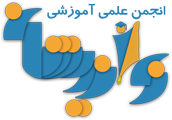جستجو در تالارهای گفتگو
در حال نمایش نتایج برای برچسب های 'ligament'.
1 نتیجه پیدا شد
-
[h=1]Ligament[/h] In anatomy, the term ligament is used to denote any of three types of structures.[1] Most commonly, it refers to fibrous tissue that connects bones to other bones and is also known as articular ligament, articular larua,[2] fibrous ligament, or true ligament. Ligament can also refer to: Peritoneal ligament: a fold of peritoneum or other membranes. Fetal remnant ligament: the remnants of a tubular structure from the fetal period of life. The study of ligaments is known as desmology (from Greek δεσμός, desmos, "string"; and -λογία, -logia). [TABLE=class: toc] [TR] [TD] [h=2]Contents[/h] [hide] 1 Articular ligaments 1.1 Examples [*]2 Peritoneal ligaments [*]3 Fetal remnant ligaments [*]4 See also [*]5 References [/TD] [/TR] [/TABLE] [h=2]Articular ligaments[/h] "Ligament" most commonly refers to a band of tough, fibrous dense regular connective tissue comprising attenuated collagenous fibers. Ligaments connect bones to other bones to form a joint. They do not connect muscles to bones; that is the job of tendons. Some ligaments limit the mobility of articulations, or prevent certain movements altogether. Capsular ligaments are part of the articular capsule that surrounds synovial joints. They act as mechanical reinforcements. Extra-capsular ligaments join together and provide joint stability. Intra-capsular ligaments, which are much less common,[citation needed] also provide stability but permit a far larger range of motion. Cruciate ligaments occur in pairs. Ligaments are viscoelastic. They gradually lengthen when under tension, and return to their original shape when the tension is removed. However, they cannot retain their original shape when stretched past a certain point or for a prolonged period of time. This is one reason why dislocated joints must be set as quickly as possible: if the ligaments lengthen too much, then the joint will be weakened, becoming prone to future dislocations.[citation needed] Athletes, gymnasts, dancers, and martial artists perform stretching exercises to lengthen their ligaments, making their joints more supple. The term "double-jointed" refers to people who have more elastic ligaments, allowing their joints to stretch and contort further. The medical term for describing such double-jointed persons is hyperlaxity. The consequence of a broken ligament can be instability of the joint. Not all broken ligaments need surgery, but if surgery is needed to stabilise the joint, the broken ligament can be repaired. Scar tissue may prevent this. If it is not possible to fix the broken ligament, other procedures such as the Brunelli procedure can correct the instability. Instability of a joint can over time lead to wear of the cartilage and eventually to osteoarthritis. [TABLE=class: infobox] [TR] [TH=bgcolor: dimgray, colspan: 2, align: center]Ligament[/TH] [/TR] [TR] [TD=colspan: 2, align: center][/TD] [/TR] [TR] [TD=colspan: 2, align: center]Diagram of the right knee.[/TD] [/TR] [TR] [TD=colspan: 2, align: center][/TD] [/TR] [TR] [TD=colspan: 2, align: center]Typical joint[/TD] [/TR] [/TABLE]
